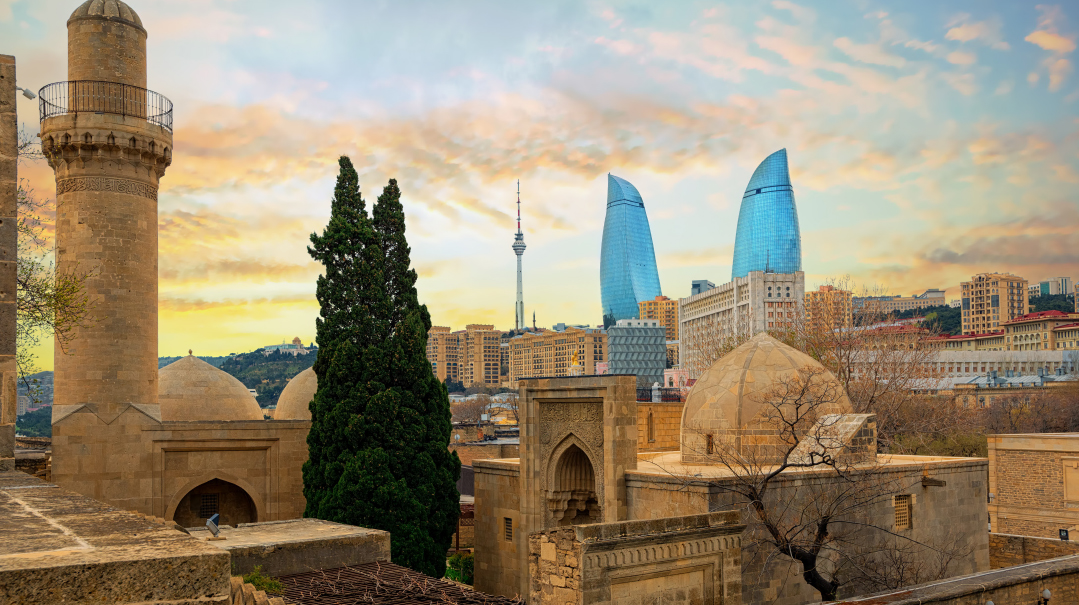The Last Shtetl
| January 2, 2024On a visit to Azerbaijan, the shtetl lives on

Photos: Moshe Klein
It’s not simple to have an all-Jewish town smack in the middle of a Shiite Muslim country, but the Mountain Jews of Azerbaijan’s Red Village, who’ve been living here since First Temple times, have been maintaining a separate yet peaceful coexistence with their neighbors for centuries. Moshe Klein knew he had to visit before it was too late
The Last Shtetl
When Moshe Klein first heard of the Mountain Jews, whose presence in Azerbaijan dates back to the time of the First Beis Hamikdash, he knew he would have to visit their hometown of Gyrmyzy Gasaba to learn more about them and their history. With Covid and the Russian-Ukraine war both prompting many residents to relocate to other places, visiting Gyrmyzy Gasaba while it still had a vibrant Jewish community became a priority, and so he and his wife packed up and off they flew.
Prior to his arrival in Azerbaijan, a country bordering Iran on the south, and Russia and Georgia on the north, Klein had been in touch with the local rabbi, who prefers to be known simply by his first name, Rabbi Yona. Rabbi Yona, who came to Grymyzy Gasaba (known in English as Red Village) from Kfar Saba, Israel, in 2005, sent a driver to Baku International Airport to pick up the Kleins and bring them back to the town, which is believed to be the oldest Jewish community outside of Israel, and the world’s sole surviving shtetl.
Klein soon discovered that he and his wife were the only guests in the Red Village’s Jewish hotel. While it wasn’t exactly a five-star Hilton, Klein was happy to support the local Jewish community and eager to get a taste of mountain life, particularly because this trip was unlike so many of the others he had taken.
“This wasn’t just about seeing a Jewish community,” explains Klein. “This was about experiencing shtetl life. I know what a Hungarian shtetl is, like you might find in Monroe or Boro Park, but what is a shtetl like in Azerbaijan?”
The Mountain Jews live on the north side of the Qudyal River and typically don’t mingle with their neighbors to the south, the Muslim residents of the city of Quba, although they share a peaceful coexistence. Walking through the Red Village, Klein was surprised to see the Russian, Turkish, Israeli, Azerbaijani, and Pakistani flags all flying next to each other, a combination that is anything but typical. That multinational feeling carried into some of the grocery stores, where Klein was happy to find snacks and other items imported from Israel.
One challenge that Klein faced was the language barrier. The Mountain Jews’ language, Juhuri — also known as Judeo-Tat — is an amalgam of Persian, Hebrew, and Turkish, and while the older members of the community are also fluent in Russian, the younger set typically speaks Azerbaijani. Although village signage directing people to the shul, the mikveh, and the cemetery includes both Hebrew and English, few residents speak either of those languages, making communication difficult though not impossible.
“It was a little better with the youngsters,” says Klein. “We used a lot of hand signs and a little Hebrew to communicate, and somehow we managed to figure things out.”
The shtetl vibe was readily apparent in the Red Village’s tea shops, where residents come in to enjoy a hot drink, the company of good friends, and a game or two of backgammon. Pictures of rabbanim adorn the walls of the shop that Klein visited, and his fellow tea drinkers were attired in either yarmulkes or kashketelach — the billed black caps typically associated with chassidim. Klein caught a ride with one of the locals when he left the tea shop and was surprised when his new friend asked him for a brachah. While brachos are a regular occurrence in Eretz Yisrael where Kohanim duchan daily, and are given on Yamim Tovim in the rest of the world, they are a rarity for residents of the Red Village.
“They have no Kohanim,” explains Klein, who was happy to comply with the request for a brachah, even though he isn’t of priestly lineage. “Some of the Mountain Jews say they are descended from the Ten Shevatim.”
Oops! We could not locate your form.







